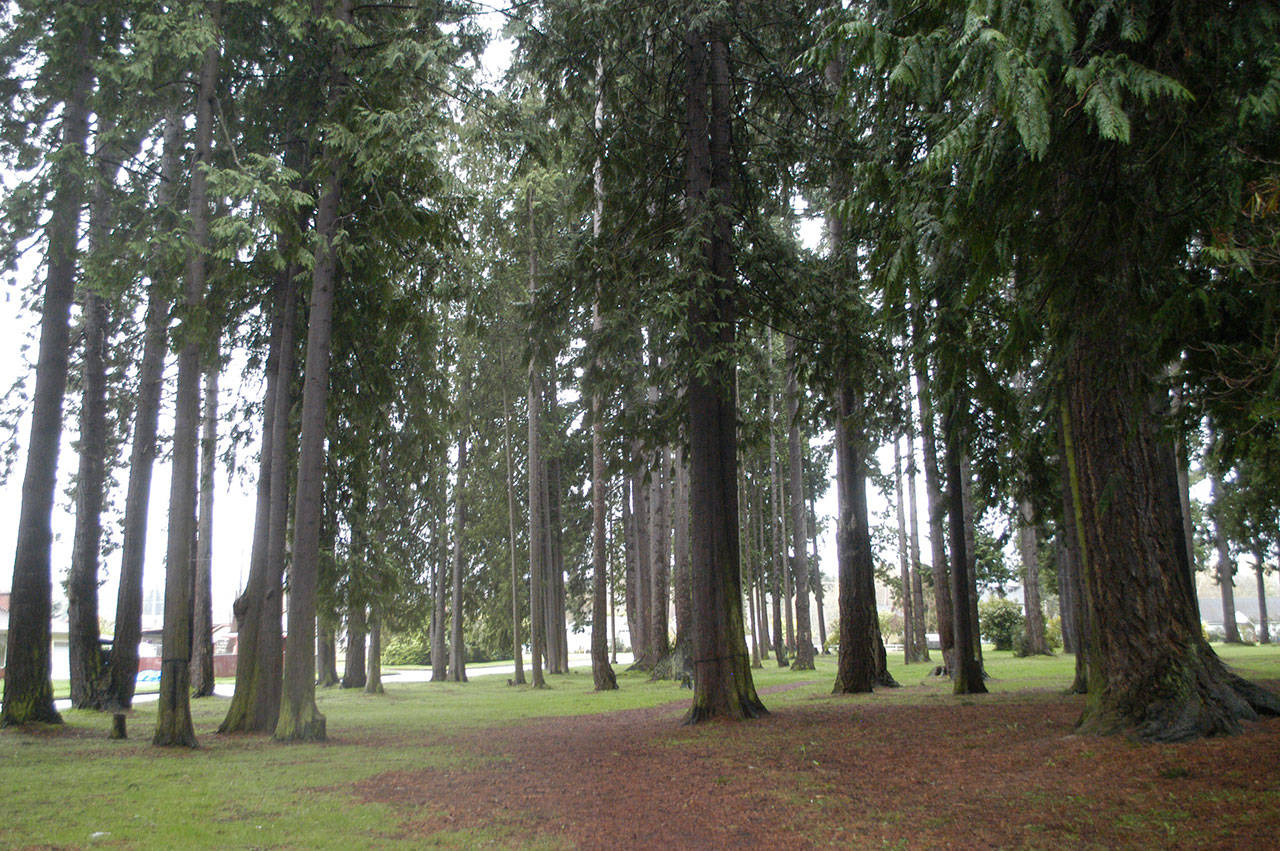PORT ANGELES — Port Angeles has lost its designation as a tree city and the City Council wants it back.
Urban forester Ben Thompson of the state Department of Natural Resources briefed the council last week on how the city can reclaim its position on the Arbor Day Foundation’s Tree City USA list.
“If you designate authority and have a community tree board, if you have an ordinance on the books, if you track your activities and costs, and if you publicly recognize and celebrate trees, then that gets you into the Tree City USA program,” Thompson told the council Tuesday.
There are 89 Washington cities on the Tree City USA roster, including 17-year member Port Townsend and second-year member Sequim.
Port Angeles had been on the Tree City USA list for three years when it was recently removed.
“The city joined the Tree City USA program with former employee Scott Johns [an associate planner] kind of carrying the torch for that,” Thompson said.
“Scott’s no longer here, and I think that that may be a factor in the city’s lapsing in the Tree City USA program.
“That doesn’t mean that the existing staff aren’t taking the issue seriously,” Thompson added.
“I think it just underscores the challenge that especially a small city has to undertake so many things with limited budgets and limited staffing.”
The city of Port Angeles has an ordinance that allows the city manager to designate a community forester.
The appointment of a forester or a city tree committee would fulfill a requirement of the Tree City USA program.
“We always recommend that every community have some type of community advisory group,” Thompson said.
To re-qualify as a Tree City, Port Angeles would need to track the activities and costs of its tree program and recognize and celebrate Arbor Day.
The state recognizes Arbor Day on the second Wednesday in April. National Arbor Day is the last Friday in April.
“We may have missed that this year because we’re just finding out about this, but we will find another day as soon as we can,” City Councilwoman Cherie Kidd said.
Many cities in Washington celebrate Arbor Day in October or November, Thompson said.
“The Arbor Day legacy is to celebrate in the spring, but here in Washington, our best planting season is really late September even through February,” Thompson said.
Thompson outlined the benefits of having an urban forestry program and the “ecosystem services” that trees provide.
Unlike built infrastructure such as sewer, water and streets, a well-managed tree in a city park or public right of way will add value as it grows to full size over 60 years or more, he said.
“They’re providing shade, they’re helping us conserve energy, they’re providing wildlife habitat, they’re sequestering carbon, they’re intercepting and mitigating stormwater, they’re scrubbing pollutants from the air and scrubbing pollutants from that stormwater as well,” Thompson said.
“They’re buffering noise, keeping winds down, et cetera, et cetera, et cetera. So relative to the cost of your built infrastructure, the cost of planting and caring for trees is relatively low given the payback.”
A DNR-funded analysis found that Port Angeles has the potential for a 48-percent tree canopy but its canopy in 2011 was only 27.3 percent, Thompson said.
Thompson cited a study from California that found that trees extend the life of asphalt by about 60 percent because the shade keeps pavement from expanding.
“There are also intrinsic values of living on tree-lined streets,” he added.
Thompson suggested the City Council add trees to the city’s comprehensive plan, emergency management plan and other documents.
He also suggested that the city hire a part-time arborist to help the city manage its tree inventory.
“I would love us to be a Tree City USA as well,” Councilman Mike French said after Thompson’s presentation.
“But to me, the takeaway is that we’re kind of on the wrong trajectory in some ways when you’re talking about the canopy and things like that. So I really hope we take a look at this and how we’re planning future developments.”
Nathan West, community and economic development director, said the city is working to protect its environmental assets.
“When we see someone cutting down a big leaf maple in one of our creek corridors, we deal with it,” West said.
“When we see someone cutting down a tree on a marine bluff that’s jeopardizing root systems along that marine bluff, we are dealing with it.
“I think there’s a lot of good news as far as some of the accomplishments that Scott Johns achieved for the city relative to getting us up to that [Tree City USA] program,” West added.
________
Reporter Rob Ollikainen can be reached at 360-452-2345, ext. 56450, or at rollikainen@peninsuladailynews.com.

